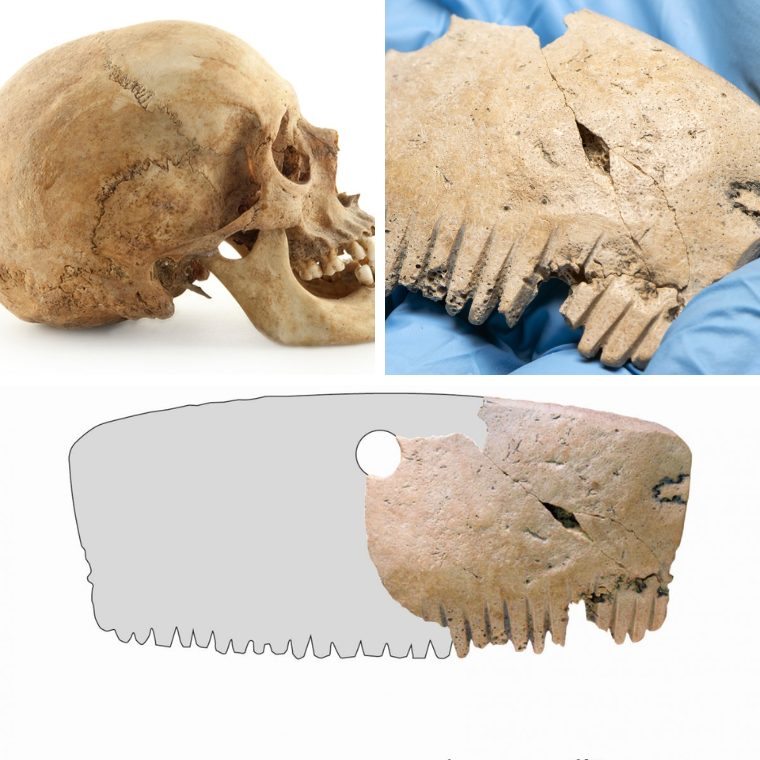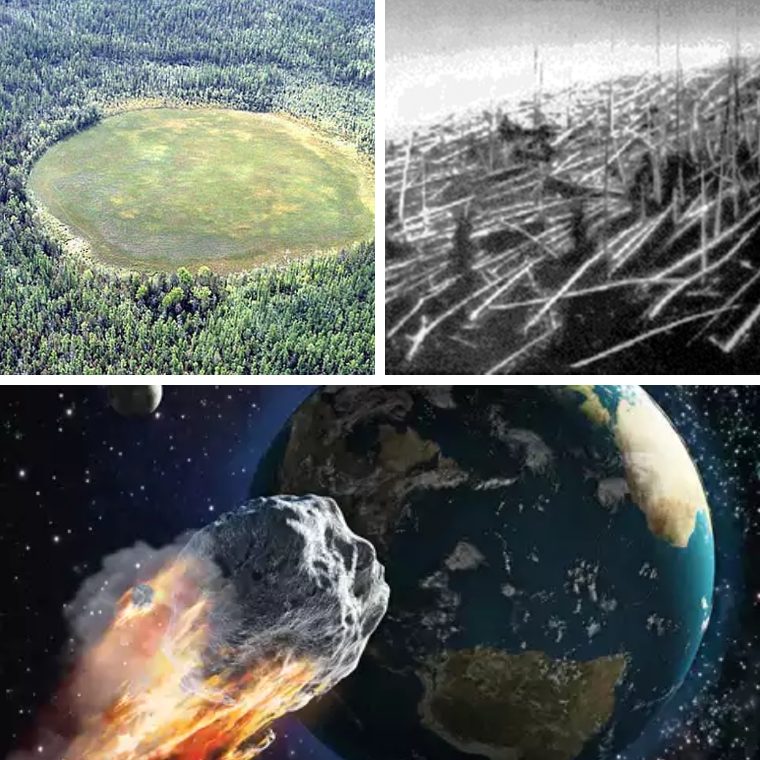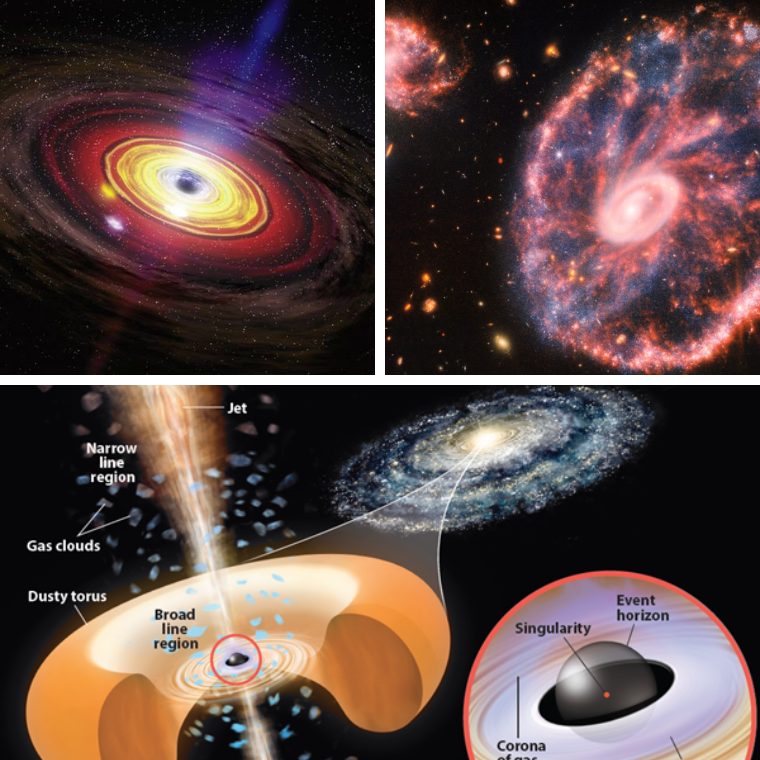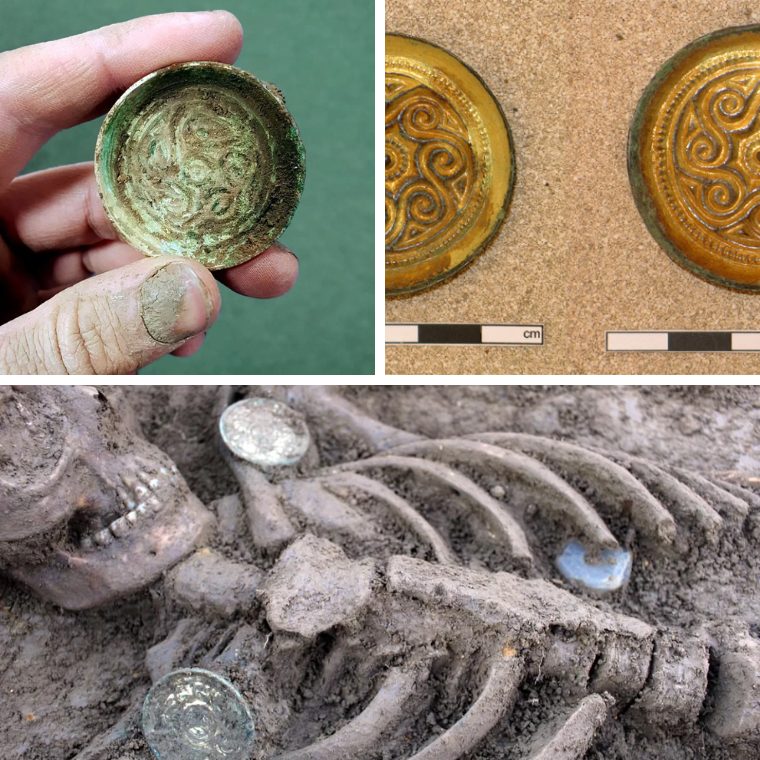While sorting through some 280,000 artifacts excavated from land reserved for a highway construction project running from Cambridge to the village of Huntingdon in eastern England, archaeologists affiliated with the Museum of London Archaeology (MOLA) discovered a miniature comb that was incredibly ancient and also made from a most unusual material. Now dated to Britain’s Iron Age (750 BC to 43 AD), the two-inch (five-centimeter) comb was carved out of a fragment of a human skull, which may have belonged to a respected elder or perhaps a dead ancestor of the comb’s owner. It looks Like a Comb, but Was it? This unusual and…
Author: s s
We know that the ancient world is now very colorful. But these colors weren’t just limited to robes and other clothing, statues and buildings also offered an astonishing palette. Roman Britain was a place of vibrant color even in the far north. Pliny the Elder mentioned the orange, red, and purple clothes worn by priests and priestesses in addition to the deep red robes of the Roman legions, while popular dyes used in the Roman world included madder, kermes, weld, woad, saffron, and lichen purple. However, these colors were not limited to robes and other clothes; sculptures and buildings also…
Most meteor showers are associated with comets, but asteroid-driven showers might be more common than previously thought. Every day, thousands of small rocks — dust grain- to pebble-sized — cross paths with Earth’s atmosphere and burn up. More organized collisions, known as meteor showers, are visible to us when the planet passes through whole clouds of rocky debris. These fragments were long thought to come strictly from comets whose crusts had been heated by the Sun and cracked open. But early in 2019, NASA’s OSIRIS-Rex spacecraft (short for Origins, Spectral Interpretation, Resource Identification, and Security-Regolith Explorer) captured images from the near-Earth asteroid Bennu that…
A new theory explains the mysterious explosion in Siberia, scientists say, suggesting Earth barely escaped a far greater catastrophe. In the early morning of June 30, 1908, a massive explosion flattened entire forests in a remote region of Eastern Siberia along the Tunguska River. Curiously, the explosion left no crater, creating a mystery that has puzzled scientists ever since — what could have caused such a huge blast without leaving any remnants of itself? Now Daniil Khrennikov at the Siberian Federal University in Russia and colleagues have published a new model of the incident that may finally resolve the mystery.…
The front of one gold earring in the Byzantine style that a metal detectorist found in Germany. A trainee metal detectorist in northern Germany recently hit on something his mentor never expected: an 800-year-old hoard of gold jewelry and silver coins that hints at the area’s trade connections. The large hoard contained a dazzling collection of artifacts. “The hoard consisted of two very high-quality gold earrings set with semi-precious stones, a gilded pseudo-coin brooch, two gilded stone-studded finger rings, a ring fragment, a small formerly gilded perforated disc, a ring brooch, and about 30 silver coins, some of them heavily…
Nitrous oxide (also known as laughing gas) — a product of microbial nitrogen metabolism — is a compelling exoplanet biosignature gas with distinctive spectral features in the near- and mid-infrared regions of the electromagnetic spectrum. Schwieterman et al. conducted a systematic photochemical and spectral investigation of nitrous oxide as an exoplanet biosignature and place upper limits on the nitrous oxide abundances and detectability from a productive biosphere. Image credit: Sci.News. One of the most compelling drivers of exoplanet science is the search for inhabited planets like Earth, which may be identified through remote biosignatures — chemical compounds in a planet’s…
Inside all huge galaxies lies a supermassive black hole. Some are shining brightly, while others are barely visible — but all of them can teach us something about how galaxies evolve. Centaurus A is a nearby active galaxy. It is a Seyfert galaxy: Its center hosts an actively feeding supermassive black hole, but that region’s light is not bright enough to drown out the galaxy around it. In a galaxy like the Milky Way, light comes entirely from a combination of shining stars and glowing gas. However, in an active galaxy, the energy output is too high to attribute to…
Paleontologists from the University of Vienna and elsewhere have revised a controversial species of the elasmobranch Protospinax annectans based on new specimens from the Late Jurassic Konservat-Lagerstätte of the Solnhofen Archipelago in Bavaria, Germany. Environmental reconstruction of the Solnhofen Archipelago, showing Protospinax annectans in association with the Late Jurassic ray Asterodermus platypterus. Image credit: Jambura et al., doi: 10.3390/d15030311. “The fossil record of sharks and rays (Elasmobranchii) mainly consists of isolated teeth, which are rapidly grown and continuously replaced,” said Dr. Patrick Jambura, a researcher in the Department of Palaeontology at the University of Vienna, and colleagues. “By contrast, skeletal remains are rare due to the…
A small near-Earth asteroid designated 2023 BU made its closest approach on January 26, 2023 at 7:29 p.m. EST (4:29 p.m. PST, or January 27, 2023 at 00:29 UT) only 3,600 km (2,200 miles) over the southern tip of South America. This is an artist’s impression of a rocky and water-rich asteroid being torn apart by the strong gravity of the white dwarf star GD 61. Image credit: Mark A. Garlick, Space-art.co.uk / University of Warwick / University of Cambridge. 2023 BU is a near-Earth asteroid with a diameter less than 8 m and an orbital period of 1.16 years. It…
Dr. Lokesh Mishra and his colleagues from the University of Bern and Geneva Observatory propose that the space of planetary system architectures be partitioned into four classes: similar, mixed, anti-ordered, and ordered. “More than a decade ago, astronomers noticed, based on observations with NASA’s Kepler space telescope, that planets in other systems usually resemble their respective neighbors in size and mass — like peas in a pod,” Dr. Mishra said. “But for a long time it was unclear whether this finding was due to limitations of observational methods.” “It was not possible to determine whether the planets in any individual…
Cemetery Found in Mexico City Reflects Changing Burial Customs INAH experts recovered the skeletal remains of 21 individuals during the construction of the so-called “Pavellón Escénico“, in Chapultepec Park, Mexico City. A cemetery from the early viceregal period (1521-1620 AD) was found in the area where the Chapultepec Forest Garden and “Pabellón Escénico” (Scenic Pavilion) are being built, reports the Ministry of Culture. Experts from the National Institute of Anthropology and History (INAH), through the Directorate of Archaeological Rescue (DSA), made the discovery in the area known as ecological parking. In the text, the coordinator of the DSA, María de Lourdes López Camacho,…
Our galaxy should be full of traces of dead stars. Until now, we have found surprisingly few of these supernova remnants, but a new telescope collaboration is changing that. Combined images from the ASKAP and Parkes radio telescopes. R. Kothes (NRC) and the PEGASUS team. Two major astronomy research programs, called EMU and PEGASUS, have joined forces to resolve one of the mysteries of our Milky Way: where are all the supernova remnants? A supernova remnant is an expanding cloud of gas and dust marking the last phase in the life of a star, after it has exploded as a supernova. But…
Finding the cause of mass extinction events is important for understanding the history of our planet and future threats. This artist’s concept shows dust forming around a newly exploded star. A near-Earth supernova may have contributed to one of the extreme loss of biodiversity periods in the Earth’s past. Most scientists think the dinosaurs — along with countless other creatures — were wiped out some 66 million years ago when a space rock slammed into Earth. But a cosmic impact isn’t the only disaster that could have rapidly extinguished a huge percentage of life on Earth; nearby supernovae can pose…
To form a celestial object, start with a gas cloud and add gravity. Then, it gets complicated. Material from an accretion disk swirls around the young star FU Orionis in this artist’s concept. Accretion is one of the most fundamental processes in the cosmos. It is a universal phenomenon triggered by gravity, and the process by which bits of matter accumulate and coalesce with more bits of matter. It works inexorably on all scales to attract and affix smaller things to bigger things, from the tiniest dust grains to supermassive black holes. Accretion creates everything there is: galaxies, stars, planets,…
Archaeologists have dated the unusual face-down burial of the young woman at the Monte Luna necropolis in Sardinia to late in the third century B.C. or early in the second century B.C. The strange facedown burial of a young woman, who likely had a nail driven into her skull around the time she died in Sardinia more than 2,000 years ago, could be the result of ancient beliefs about epilepsy, according to new research. The facedown burial may indicate that the individual suffered from a disease, while an unusual nail-shaped hole in the woman’s skull may be the result of…
The Drake equation is used to estimate the number of advanced civilizations in the Milky Way. Because researchers work with a number of uncertainties within each variable, the equation can never be solved. If the solar system is only 4.6 billion years old but the universe has existed for 13.8 billion years, isn’t it likely that other forms of life existed well before us in the universe? With estimates suggesting there are more than 10 billion terrestrial planets in the Milky Way and several hundred billion galaxies in the observable universe, it seems statistically unlikely that lightning only stuck once…
What is time? Why is it so different from space? And where did it come from? Scientists are still stumped by these questions — but working harder than ever to answer them. Quantum entanglement — when the states of two particle are intertwined by the laws of quantum mechanics — has long vexed physicists. But the phenomenon may also hold the key to understanding how time emerged. J St. Augustine said of time, “If no one asks me, I know what it is. If I wish to explain to him who asks, I don’t know.” Time is an elusive concept:…
Archaeologists have found seven pairs of Anglo-Saxon brooches in seven graves during an excavation in Gloucestershire Archaeologists have found seven pairs of Anglo-Saxon saucer brooches, one pair in each of seven burials unearthed in an excavation in South West of England Gloucestershire. The wonderful discovery was announced on Twitter by Cotswold Archeology. At the site, the Cotswolds Archaeology team unearthed more than 70 Anglo-Saxon burials, some of which had luxurious grave goods. They are from the 5th or 6th centuries. Seven pairs of gold-gilt plate (or saucer) brooches were found, in seven separate graves. Plate brooches such as these were…
An elaborate scheme to shade Earth with millions of tons of Moon dust floating in space is unlikely to get off the ground. A group of U.S. scientists recently proposed an unorthodox scheme to combat global warming: creating large clouds of Moon dust in space to reflect sunlight and cool Earth. In their plan, we would mine dust on the Moon and shoot it out towards the Sun. The dust would stay between the Sun and Earth for around a week, making sunlight around 2 percent dimmer at Earth’s surface, after which it would disperse and we would shoot out more dust.…
The concept of using robotic explorers to investigate subsurface oceans has been around for years. And a fresh shot of funding might soon turn the ambitious plan into a reality. NASA recently provided $600,000 in phase II funding to investigate a novel approach for exploring the subsurface oceans of the solar system’s icy moons. In our search for life beyond Earth, the ocean worlds — icy moons with deep seas — have become primary targets. But these exotic moons have one problem: Their oceans, which astrobiologists think may host life, are trapped beneath miles of solid ice. So how can…
As the permafrost on Bolshoy Lyakhovsky Island in eastern Siberia melted, a mummified brown bear that lived more than three thousand five hundred years ago emerged. In an effort to advance research on extinct animals, researchers are now preparing to perform an autopsy on the bear. The female bear was found by reindeer herders in 2020 jutting out of the permafrost. It was given the name Etherican brown bear because it was discovered just east of the Bolshoy Etherican River. “This find is absolutely unique: the complete carcass of an ancient brown bear,” said Maxim Cheprasov, laboratory chief at the Lazarev…
The Double Asteroid Redirection Test (DART) successfully showed that it is possible to crash a spacecraft into a small asteroid. Whether the approach could save Earth from a future threat remains to be seen. Didymos (bottom right) and its smaller moonlet Dimorphos (top left) were the targets of the Double Asteroid Redirection Test. In a world first, NASA has crashed a spacecraft into an asteroid in an attempt to push the rocky traveler off its trajectory. The Double Asteroid Redirection Test – or DART – is meant to test one potential approach that could prevent an asteroid from colliding with Earth. David…
In the next 12 months, an annular and then a total solar eclipse will cross the U.S. Here’s where to see them. This distance-decay model shows how many people are estimated to travel to see the 2024 total solar eclipse. Scroll to the end of the article for a higher-resolution version of all maps. North America will experience two spectacular solar eclipses within a six-month span from Oct. 14, 2023, to April 8, 2024. The first is an annular eclipse whose central path treks across the western U.S. from Oregon to Texas before crossing Central America and northern South America.…
An astounding discovery in the Heaning Wood Bone Cave in northern England has revealed the oldest human remains found in the region, dating back 11,000 years. A team from the University of Central Lancashire ( UCLAN), uncovered evidence of human activity in the early Mesolithic period, shedding new light on the technologies and cultural habits of our ancestors. The Heaning Wood Bone Cave in Cumbria was first excavated in 1958 by E.G. Holland and this limestone formation with a vertical shaft has developed into a complex karstic fissure system. The cave was found to contain the preserved skeletal remains of three adults and…

























